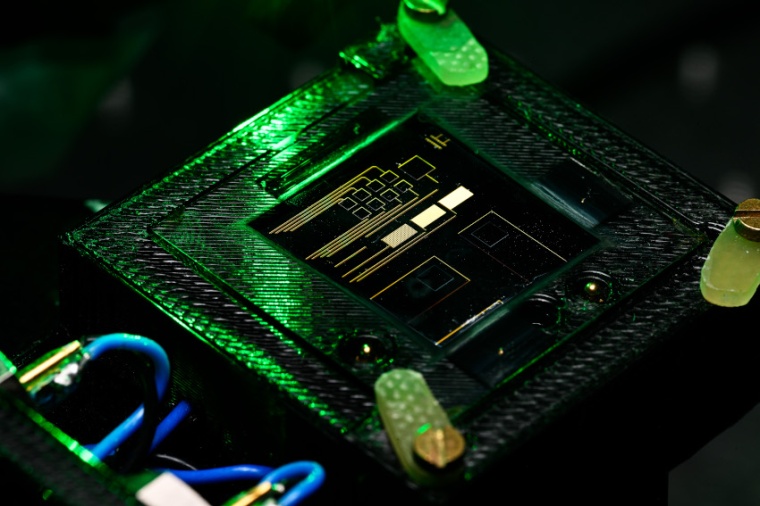Light sensor achieves high efficiency of 200 percent
A tandem photodiode combines both perovskite and organic PV cells.
Solar panels with multiple stacked cells are currently breaking records. Remarkably, a team of researchers from Eindhoven University of Technology and TNO at Holst Centre have now managed to make photodiodes with a photoelectron yield of more than 200 percent. Efficiencies of more than 100 percent can be done. The answer lies in the quantum efficiency and stacked solar cells.

“I know, this sound incredible. But, we’re not talking about normal energy efficiency here. What counts in the world of photodiodes is quantum efficiency. Instead of the total amount of solar energy, it counts the number of photons that the diode converts into electrons“, René Janssen explains. “The better the diode is able to detect weak light signals, the higher its efficiency.” Photodiodes produce a current when they absorb photons. They are used as sensors in a variety of applications, including medical purposes, wearable monitoring, light communication, surveillance systems, and machine vision. In all these domains, high sensitivity is key.
For a photodiode to work correctly, it has to meet two conditions. Firstly, it should minimize the current that is generated in the absence of light, the dark current. The less dark current, the more sensitive the diode. Secondly, it should be able to distinguish the level of background light from the relevant infrared light. Unfortunately, these two things usually do not go together, on the contrary. Four years ago, Riccardo Ollea, one of Janssen’s PhD students, set about solving this conundrum. In his research he joined forces with the photodetector team working at Holst Centre, a research institute specialized in wireless and printed sensor technologies, Ollearo built a tandem diode that combines both perovskite and organic PV cells.
Combining these two layers he was able to optimize both conditions, reaching an efficiency of 70 percent. “Impressive, but not enough”, says the researcher. “I decided to see if I could increase the efficiency even further with the help of green light. I knew from earlier research that Illuminating solar cells with additional light can modify their quantum efficiency, and in some cases enhance it. To my surprise, this worked even better than expected in improving the photodiode sensitivity. We were able to increase the efficiency for near-infrared light to over 200 percent!”
Up this point, the researchers still don’t know exactly how this works, although they’ve come up with a theory that might explain the effect. “We think that the additional green light leads to a build-up of electrons in the perovskite layer. This acts as a reservoir of charges that is released when infrared photons are absorbed in the organic layer”, says Ollearo. “In other words, every infrared photon that gets through and is converted in an electron, gets company from a bonus electron, leading to an efficiency of 200 percent or more. Think of it as getting two lira for your guilder, instead of one!”
The researcher tested the photodiode, which is suitable for use in flexible devices, in the lab. “We wanted to see whether the device could pick up subtle signals, such as the heart or respiration rate of a human being in an environment with realistic background light. We opted for an indoor scenario, during a sunny day with the curtains partially closed. And it worked!”
Holding the device at 130 centimeter from a finger, the researchers were able to detect minute changes in the amount of infrared light that was reflected back into the diode. These changes turn out to be a correct indication of changes in the blood pressure in a person’s veins, which in turn indicate heart rate. When pointing the device at the person’s chest, they were able to measure the respiration rate from light movements in the thorax”.
Ollearo’s work is all but finished. “We want to see if we can further improve the device, for instance by making it quicker”, says Janssen. “We also want to explore whether we can clinically test the device, for instance in collaboration with the FORSEE project.” The FORSEE project, led by TU Eindhoven researcher Sveta Zinger and in collaboration with the Catharina Hospital in Eindhoven, is developing an intelligent camera that can observe a patient’s heart and respiration rates. (Source: TU Eindhoven)
Link: Molecular Materials and Nanosystems, Technical University Eindhoven, Eindhoven, The Netherlands











